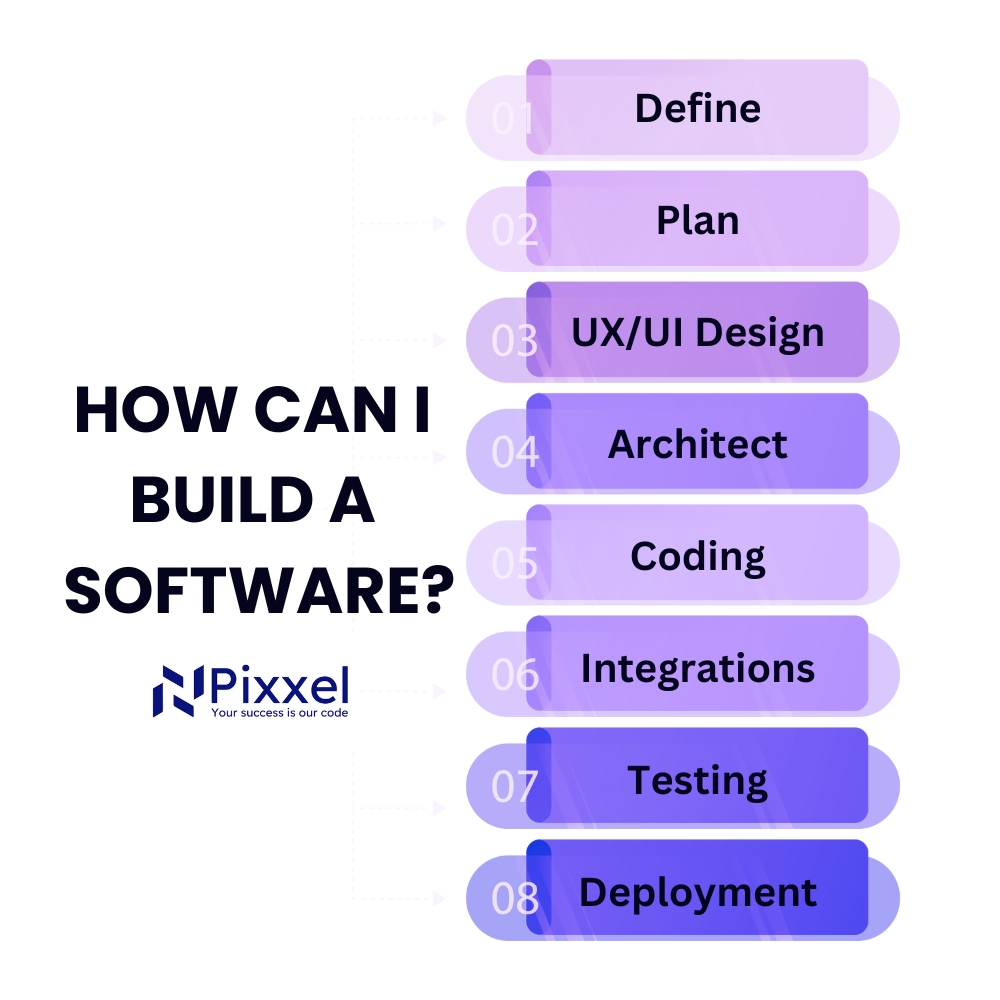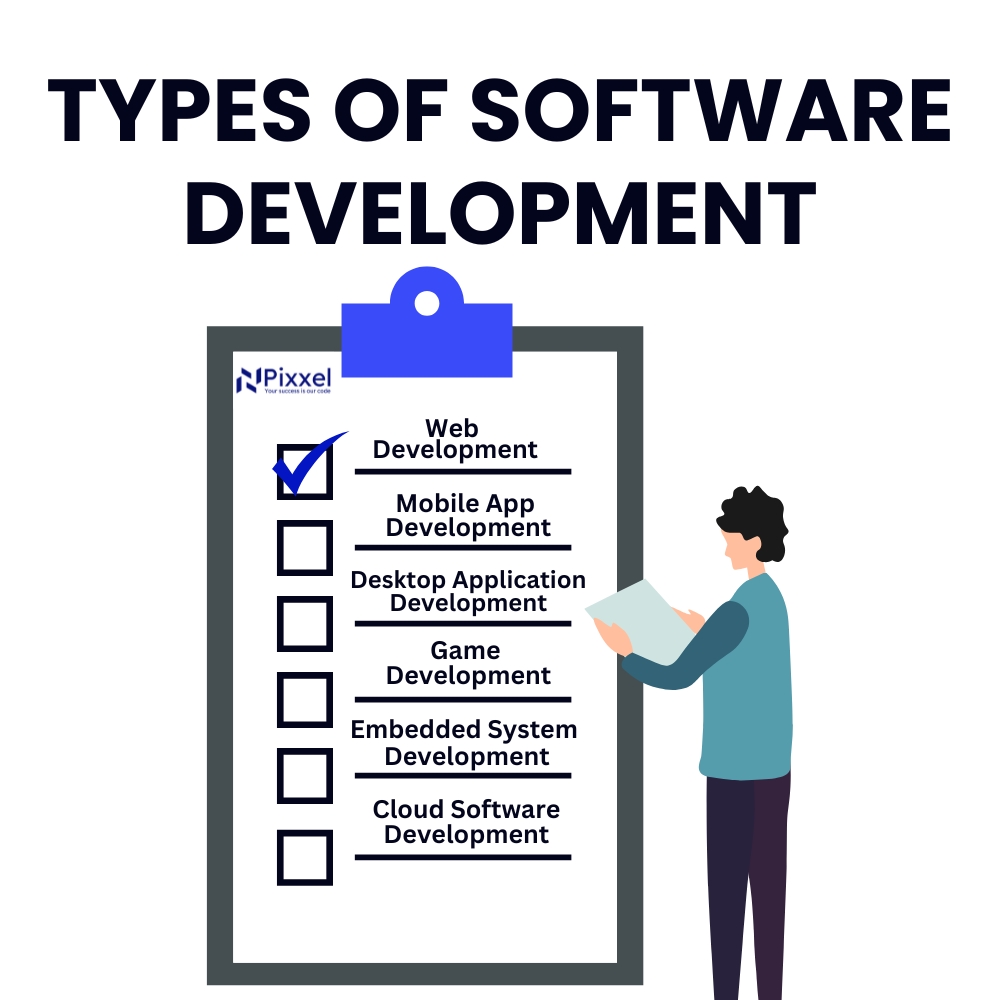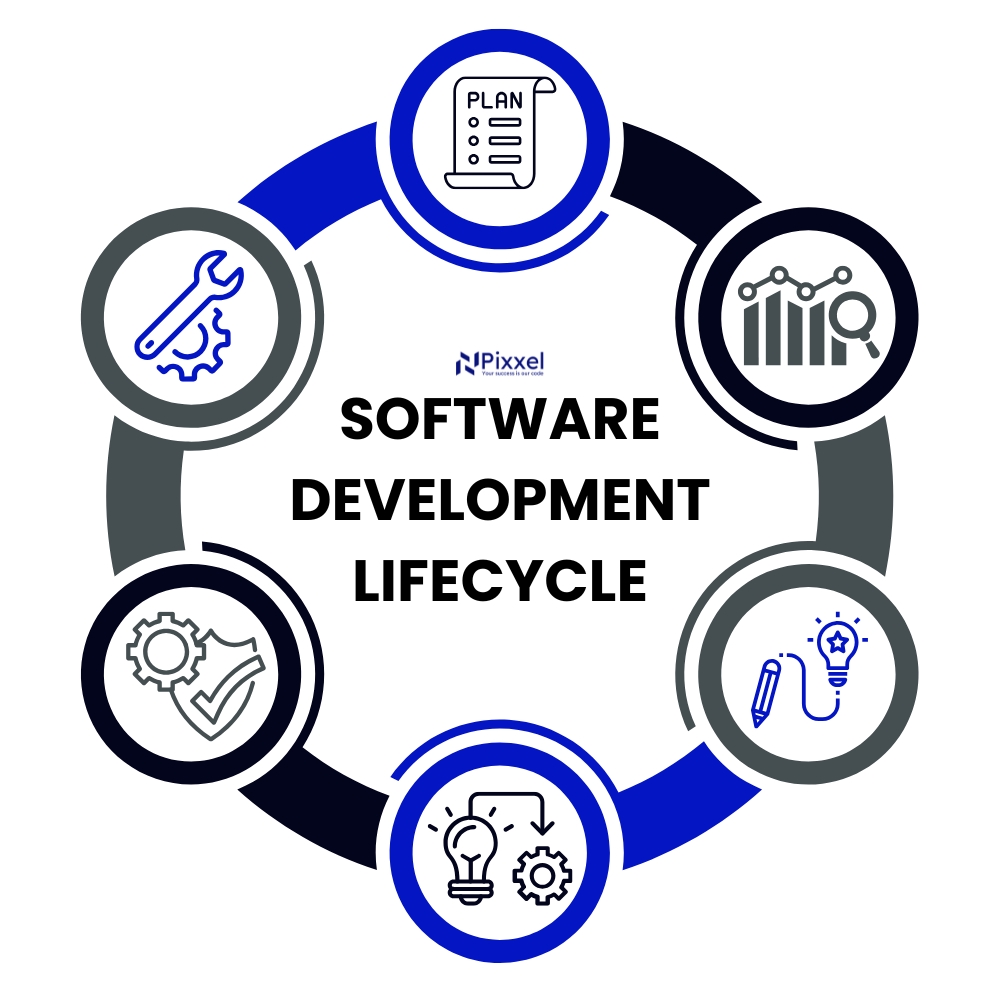Programming languages are the foundation of our digital world. Every app you use, every website you visit, and every device you interact with relies on these lines of code to function. In 2025, the choices are vast, but picking the right programming language can be a game-changer for your career or project.
We’re diving deep into top programming languages of 2025. This isn’t just another list. It’s your roadmap to understanding what languages matter most, where they shine, and how you can harness them effectively.
Whether you’re building the next killer app, streamlining backend systems, or venturing into blockchain, there’s a language tailored to your needs.
Think of this guide as your insider’s look into the tools shaping the future of tech. Together, we’ll explore why these languages are dominating, how they’re used, and what makes them essential. Ready to discover your next go-to language? Let’s get started!
Key Takeaways
- Programming language depends on your goals and domain.
- Essential languages like Python, JavaScript, and C++ dominate across multiple fields.
- Emerging languages like Dart and Solidity cater to modern trends like UI development and blockchain.
- Staying updated involves practicing, learning, and exploring trends through community engagement and hands-on projects.
Essential Programming Languages & Domain Performance
Before we go into the details of every language and its features that help carry out the project, this is an overview of the most common languages and the domains they perform best in.
| Programming Language | Domain | Features |
|---|---|---|
| HTML | Web Development | Structures content and creates the foundation for websites. |
| CSS | Web Development | Styles web content with layouts, colors, and fonts. |
| JavaScript | Web Development | Adds interactivity and dynamic features to websites. |
| TypeScript | Web Development | Enhances JavaScript with static typing for large-scale apps. |
| PHP | Web Development | Powers server-side functionality and CMS like WordPress. |
| Dart | Web Development | Enables dynamic UIs and cross-platform development. |
| Elixir | Web Development | Excels in real-time applications like live chats and games. |
| Swift | Mobile Development | Primary language for iOS and macOS app development. |
| Kotlin | Mobile Development | Google’s choice for Android apps with concise syntax. |
| Flutter | Mobile Development | Supports cross-platform apps with a single Dart codebase. |
| Python | Data Science & AI | Simple and versatile with extensive libraries for machine learning. |
| R | Data Science | Specialized in statistical computing and data visualization. |
| Julia | AI | Handles computationally intensive tasks efficiently. |
| MATLAB | Data Science | Widely used for numerical computing and simulations. |
| SAS | Data Science | Excels in enterprise-level statistical modeling. |
| Scala | Data Science | Works with big data frameworks like Apache Spark. |
| Fortran | Scientific Computing | Excels in numerical tasks like climate modeling. |
| CUDA | Scientific Computing | Accelerates GPU performance for deep learning and simulations. |
| OpenCL | Scientific Computing | Provides cross-platform GPU optimization. |
| Solidity | Blockchain | Used for creating secure smart contracts on Ethereum. |
| Vyper | Blockchain | Focuses on security and auditability for smart contracts. |
| Clarity | Blockchain | Integrates with Bitcoin for decentralized apps. |
Universal Programming Languages for Core Development
If you’re looking for programming languages that are reliable, widely used, and versatile across industries, we’ve got you covered. Each one has unique strengths, whether you’re building efficient system-level software, developing large-scale enterprise applications, or creating dynamic web platforms.
C
C remains one of the most foundational programming languages. It is extensively used in system programming, embedded systems, and applications where performance and memory efficiency are critical. Its influence is seen in many modern languages, making it essential for understanding the basics of programming.
C++
Building on C, C++ adds object-oriented features, making it powerful for developing games, financial systems, and real-time applications. When we use C++, it offers unparalleled control over hardware and system resources, making it a top choice for performance-critical tasks.
C#
Developed by Microsoft, C# integrates seamlessly with the .NET framework. We use it widely in Windows application development, enterprise software, and game development using Unity. Its rich library support makes it versatile for multiple use cases.
Java
Java’s “write once, run anywhere” capability ensures its relevance in enterprise applications, Android development, and server-side solutions. Its extensive ecosystem and strong community support make it an enduring favorite for large-scale projects.
Python
Python is praised for its simplicity and versatility. It’s our go-to language for data science, artificial intelligence, web development, and automation. Its vast library support allows us to quickly build and deploy applications across domains.
JavaScript
JavaScript is the backbone of web development. It allows us to create dynamic, interactive web applications and powers many popular frameworks like React and Angular. It’s indispensable for front-end developers in our team and increasingly relevant for back-end development through Node.js.
Versatile and High-Performance Choices
Whether you’re developing secure system-level software, building scalable cloud-based solutions, or managing complex databases, we will help you select your go-to choices. From Rust’s memory safety to Swift’s sleek iOS development capabilities, these languages ensure robust performance while catering to modern needs.
Rust
We prioritize Rust when we are looking for safety and speed. It eliminates common errors like null pointer dereferences and data races through its innovative ownership model. Our developing team loves it for creating system-level software where performance and reliability are non-negotiable.
Rust shines in backend development, game engines, and applications requiring high concurrency, offering a balance of power and ease of use.
Go
Go (Golang) was created by Google to simplify coding without sacrificing performance. Its standout feature, goroutines, allows us to handle multiple tasks simultaneously, making it ideal for building scalable systems. Whether it’s cloud computing, APIs, or distributed systems, Go’s clean syntax and efficient execution make it a go-to choice for our developing team.
Swift
Swift is Apple’s preferred language for creating apps within its ecosystem. Its modern syntax makes it approachable for beginners, while advanced features cater to professionals. Swift is fast and secure, enabling our developing team to create robust iOS and macOS applications with ease. From sleek mobile apps to powerful desktop tools, Swift ensures seamless performance across Apple devices.
SQL
SQL is the foundation of data management. It allows us to interact with relational databases, query data, and manage complex datasets effortlessly. From analyzing customer behavior in startups to running enterprise-level systems, SQL’s versatility makes it indispensable for us when we deal with structured data.
Kotlin
Kotlin is a game-changer when we are dealing with Android development. Its concise syntax reduces boilerplate code, while full Java interoperability ensures compatibility with existing projects. Officially endorsed by Google, Kotlin enables our team of developers to create reliable, feature-rich mobile apps faster.
Beyond Android, its growing ecosystem supports our back-end development and multiplatform projects, broadening its appeal.
PHP
PHP continues to be a vital part of web development for us, especially for back-end tasks. It powers millions of websites, including platforms like WordPress, making it a crucial tool for content management and dynamic web applications. Its simplicity makes it accessible for beginners, while its rich library ecosystem supports our professional developers.
With extensive community support and compatibility across various hosting environments, PHP remains a reliable and flexible choice for us when we are building robust web solutions.
Specialized and Legacy Tools
Some languages thrive in specialized fields, while others hold their ground due to legacy systems.
- R dominates statistical analysis and academic research.
- MATLAB empowers engineers and scientists with numerical precision.
- Perl, Assembly, Objective-C, and Delphi remain critical for legacy system maintenance and niche applications.
R
R is a specialized programming language designed for statistical computing and advanced data visualization. It shines in data analysis tasks, providing powerful tools for exploring datasets and creating detailed graphical outputs. Its versatility makes it a staple in academia, healthcare, and industries where in-depth statistical modeling is essential. R’s vast ecosystem of packages and active community support ensures that we can tackle a variety of analytical challenges with ease.
MATLAB
MATLAB is a cornerstone for numerical computing, widely adopted in engineering, science, and finance. Known for its intuitive interface and robust functionality, MATLAB is ideal for modeling, simulations, and algorithm development. Its extensive libraries and pre-built toolboxes streamline complex calculations, enabling researchers and engineers to focus on innovation rather than coding intricacies.
Perl
Perl is a scripting language renowned for its robust text manipulation and rapid prototyping capabilities. Once a dominant player in web development, it now thrives in system administration and network programming. Perl’s flexibility and backward compatibility make it invaluable, helping us maintain legacy systems while also supporting automation tasks in modern environments.
Assembly Language
Assembly provides our development team with granular control over hardware by translating directly into machine code. It is indispensable for us when we are creating firmware, operating systems, and performance-critical applications. Although challenging to learn, Assembly remains vital in embedded systems and situations where efficiency and resource optimization are paramount.
Objective-C
Objective-C is a foundational language for Apple platforms, offering strong compatibility with C and existing macOS/iOS codebases. While Swift has largely taken the spotlight, Objective-C is still critical for maintaining legacy applications. Its extensive libraries and runtime capabilities ensure that we can seamlessly integrate new features into older projects.
Delphi/Object Pascal
Delphi/Object Pascal is a robust language for rapid application development (RAD). Known for its ease of use and efficiency, it continues to support niche industries and legacy applications. Popular in domains requiring fast turnaround and strong database connectivity, Delphi remains a trusted choice for our developers in maintaining older systems or creating specialized tools.
Paradigm-Based Programming Languages
Programming paradigms define how developers approach problem-solving. Imperative languages like COBOL and Pascal excel in structured processes, while functional languages like Haskell focus on precision and immutability for complex computations. Object-oriented and multi-paradigm tools like TypeScript offer flexibility, blending structured and adaptive programming methods.
Imperative and Procedural
We use the following languages to define clear, step-by-step instructions. These languages excel in industries like aerospace and finance, where precision and reliability are crucial.
- Ada
- Fortran
- Pascal
- COBOL
Functional
Our developers ensure that they use the best languages when it comes to immutability and mathematical functions. Hence we normally use the following languages to handle complex computations with fewer side-effects.
- Haskel
- Lisp
- Elm
Object-Oriented and Multi-Paradigm
When it comes to blending object-oriented principles with flexibility, we prioritize the following languages, so that our developers can adapt their approach based on project requirements.
- TypeScript
- Ruby
- Scala
Niche and Legacy Tools
Some niche and legacy languages still excel in specific roles. SAS drives advanced analytics, Prolog supports AI, and ABAP powers SAP enterprise systems. D, Smalltalk, AWK, and Visual Basic continue to serve specialized and legacy applications effectively.
SAS, Prolog, ABAP
- SAS is a cornerstone for statistical analysis, especially in business and healthcare, offering unparalleled tools for data manipulation and visualization.
- Prolog thrives in artificial intelligence and expert systems, excelling in rule-based logic programming.
- ABAP is the lifeline for enterprise resource planning, heavily used in SAP environments for developing and managing enterprise-level applications.
Each of these tools has carved its niche by addressing specific, high-demand problems.
D, Smalltalk, AWK
- D is a systems programming language designed for performance, simplicity, and modern capabilities, making it our favorite for low-level application development.
- Smalltalk, known for its pioneering role in object-oriented programming, is still used in academic settings and specialized software.
- AWK shines in text processing and reporting, offering a lightweight solution for managing our data extraction and transformation tasks.
These languages may not dominate headlines, but their impact in specific domains is undeniable.
Visual Basic, Classic Visual Basic, VBScript
- Visual Basic and its variants were revolutionary in their heyday, providing an accessible way for us to develop Windows applications and scripts.
- Classic Visual Basic remains critical for maintaining legacy systems, especially in small businesses and specialized industries.
- VBScript, though largely replaced by modern tools, is still used in automation scripts and legacy Windows environments, ensuring the smooth operation of older applications.
These tools highlight the importance of backward compatibility in technology.
Emerging and Innovative Programming Languages
The world of programming is constantly evolving, and a new wave of languages is addressing modern challenges and opportunities. From cross-platform app development to blockchain security and lightweight performance optimization, these languages are reshaping the future of software engineering.
Dart (via Flutter)
Dart has emerged as a game-changer for UI development, thanks to its integration with Flutter. It allows developers to craft visually stunning apps for multiple platforms, including iOS and Android, using a single codebase. The “hot reload” feature enables instant updates during development, significantly reducing turnaround time. With its concise syntax and robust libraries, Dart is simplifying app development for us while delivering near-native performance.
Solidity and Vyper
These two are revolutionizing blockchain development by providing tools for creating secure smart contracts. Solidity, with its syntax inspired by JavaScript and Python, is the most widely used language for Ethereum-based applications. Vyper, a newer alternative, focuses on simplicity and security, reducing vulnerabilities in decentralized applications. Both languages are critical for the growing ecosystem of decentralized finance (DeFi) and tokenized assets.
Nim, Zig, Mojo
Nim, Zig, and Mojo are gaining traction for their focus on simplicity and performance.
- Nim combines Python-like readability with C-level speed, making it suitable for system programming and applications with limited resources.
- Zig is designed for safety and robustness, often used in system-level programming where reliability is paramount.
- Mojo targets numerical computing and AI, offering innovative features for high-performance tasks while maintaining user-friendly syntax.
Hack, Ring, Julia
- Hack, developed by Facebook, is optimized for server-side programming. It introduces gradual typing, allowing developers to transition from dynamic to static typing seamlessly.
- Ring is designed for simplicity, making it an excellent choice for beginners and educational environments.
- Julia, a high-performance language for numerical computing, is transforming fields like machine learning and scientific research with its speed and parallel computing capabilities.
Each of these programming languages caters to specific needs while pushing the boundaries of innovation.





